Some of the most important things we can do for our health aren’t big or difficult—they’re small things done often and correctly.
The experts Bottom Line relies on for its health information know that—and they are happy to share. We asked 11 of our most trusted health, fitness and diet pros to share the simple but effective things they do every day to keep themselves physically and mentally healthy. We hope they will motivate you to be more proactive…the easy way!
Eat Right
I pay close attention to portion size at mealtime. I don’t follow a restrictive diet…I don’t skip meals…and I don’t deny myself dessert—and yet, I don’t gain weight. My secret: I never eat too much at any meal. It is easy to unintentionally overeat these days, and there’s a reason for that. Prior generations used 10-inch dinner plates, but 12-inch plates now are standard, which subtly encourages people to serve themselves more food. Using smaller plates—and not going back for seconds—are simple, effective weight-control strategies.
I also divide my plate into three sections—half is exclusively for vegetables, one-quarter is for a lean protein and the remaining quarter is for a healthy carb, such as brown rice or whole-wheat pasta. If I’m at a party that has a buffet table, I visit the buffet only once…I cover much of my plate with salad before selecting any other items…and then I don’t stand near the buffet table chatting.
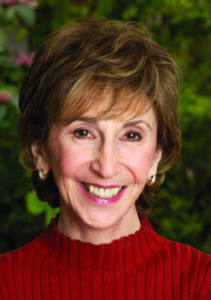
–Linda Gassenheimer, is an award-winning author of several cookbooks, including The Portion Plan: How to Eat the Foods You Love and Still Lose Weight. You can listen to her Food News & Views Podcast on all major sites. She writes the syndicated newspaper column “Quick Fix” and the website DinnerInMinutes.com.
I follow the Keto diet. This diet is best known for dramatically reducing carbohydrate consumption, but the real benefit might be that avoiding carbs means that you also are avoiding added sugars, which are particularly bad for our health. My wife and I originally adopted this diet to show support for a family member who went Keto following a cancer diagnosis, but we decided to stick with it. We feel healthier, and keeping our weight under control became easier. It certainly helps that everyone in my household follows the same diet—our kitchen is stocked with Keto-friendly foods, and every meal is prepared with Keto in mind.

–William Schaffner, MD, is professor of preventive medicine and infectious diseases at Vanderbilt University Medical Center, Nashville. VUMC.org
I monitor my weight closely instead of reacting when I gain. Weight control becomes increasingly challenging as we age and our metabolism slows down. But dieting only after I’ve gained weight isn’t the best approach—weight gain followed by rapid weight loss often leads right back to weight gain. Instead, I try not to pack on the pounds in the first place. I avoid artificial sweeteners…there is no alcohol in my diet…I pay attention to portion size at every meal…and I weigh myself every few days. If I’ve gained even a pound or two, I immediately reduce meal size and/or skip a meal here and there until the scale says I’m back to my preferred weight. This means I never need to go on a major diet.
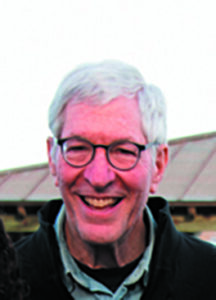
–Marc B. Garnick, MD, is Gorman Brothers Professor of Medicine at Harvard Medical School and Beth Israel Deaconess Medical Center and an internationally renowned expert in medical oncology and urologic cancer. He is editor-in-chief of Harvard Medical School’s Report on Prostate Diseases and its website HarvardProstateKnowledge.org.
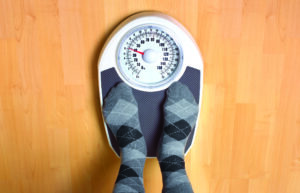
Hydrate
I monitor my urine to avoid dehydration. We’re often warned about the importance of remaining properly hydrated, but drinking more water isn’t always better—overhydration can strain certain organs. When I was in the military, I learned a hydration strategy that I still use every day—I watch the color of my urine to gauge my hydration level. Urine should be the color of straw—when mine is darker than that, it means I need to hydrate. Warning: Certain health conditions, including heart problems such as congestive heart failure…kidney problems including end-stage renal disease…and low levels of sodium in the body known as hyponatremia benefit from being slightly less hydrated than otherwise would be considered ideal. Ask your doctor if this applies to you.

–Jonathan Su, DPT, is a physical therapist, yoga therapist and former US Army officer based in the San Francisco Bay area. He is author of 6-Minute Fitness at 60+ and 6-Minute Core Strength. SixMinuteFitness.com
I line up four 16.9-ounce water bottles on my desk at the start of each day. These provide me with visual evidence of whether or not I’m remaining sufficiently hydrated—I can see full or empty bottles right in front of me. Those four bottles together add up to around two liters of water, which isn’t the full daily recommended amount—on average, men should drink around 3.7 liters of water daily…women around 2.7 liters, though this varies depending on activity level and other factors—but it’s a good start and I get the rest from other beverages. Remaining hydrated is helpful for every organ system in the body.

–Mark H. Schwartz, MD, is a clinical assistant professor of plastic surgery at Weill Cornell Medical College and a board certified plastic surgeon practicing in New York City. DrMarkSchwartz.com
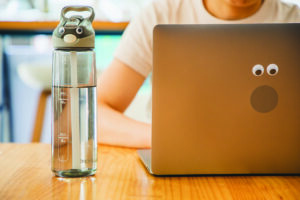
Strengthen
I use my less dominant leg for the first stair step. People aren’t just right- or left-handed—we have a dominant leg, too. Without realizing it, we tend to use that dominant leg whenever we take a challenging step, such as the step up onto a stool or the initial step of a set of stairs. That adds up to a surprising amount of extra exercise for the dominant leg over time, which can create an imbalance in leg strength—and that imbalance only increases as we age. Such imbalances can lead to knee and hip problems and increase the risk for dangerous falls. Consciously using my less dominant leg for challenging steps has helped me maintain leg-strength balance.
–Jonathan Su, DPT

I exercise my arms and shoulders. I do an “arm reach” exercise for posture alignment and a “shoulder rotator” exercise for shoulder mobility.
Arm reach: I start by standing with my back against a wall, feet shoulder-width apart, heels against the wall and toes pointed straight ahead. I position my arms against the wall with my upper arms extending out perpendicular from my body at shoulder height, my elbows bent 90 degrees and my forearms and palms facing forward and fingers spread wide. Without moving my elbows or my back away from the wall, I reach my arms straight above my head until my thumbs touch, pulling my elbows as close to my ears as is comfortable. Then I return my arms to the elbows-at-shoulder-height starting position. I repeat this arm movement a total of 25 times.
Shoulder rotator: Start in the same position as the arm reach above—back against wall, arms at 90-degree angles with elbows level with shoulders, fingers spread wide. But with this exercise, my forearms and hands do not remain against the wall, though my upper arms, back and the back of my head do. Instead, I rotate my hands and forearms until my palms are facing the floor, maintaining a straight line from the middle finger through the elbow. I do this 25 times, but with one caveat—when it gets easy, I rotate my hands and upper arms even further, until they’re rotating all the way from parallel to the ground to palms and forearms flush against the wall.

–Joel Harper, celebrity fitness trainer based in New York City, is creator of the workout DVD series Fit Pack, PBS programs Slim & Fit and Firming After 50 and the workout chapters in The New York Times best-selling YOU book and DVD series. He is author of Mind Your Body. JoelHarperFitness.com
Move
I keep moving. I believe that exercise is the best medication. I exercise four to five days per week, but what I do every day is move. I get up and walk as much as I can throughout the day. I turn on music and dance. When I walk my dogs, I might even dance down the street with them! Movement not only is good for my heart and overall health, it makes me happy…and that triggers the release of hormones that have been linked to reduced inflammation and other benefits. Movement is truly the best elixir for an overall healthy and vital life.

–Suzanne Steinbaum, DO, is a leader in preventive cardiology, now in private practice in New York City. She launched heart disease prevention programs at Mount Sinai Heart, Northwell Lenox Hill, and Beth Israel. She is CEO/founder of Adesso, a technology-based prevention model. She is author of Dr. Suzanne Steinbaum’s Heart Book: Every Woman’s Guide to a Heart Healthy Life and has been a national spokesperson for the American Heart Association’s Go Red for Women program for over 18 years. DrSuzanneSteinbaum.com

I stretch every morning. Daily stretching has helped me overcome lower-back issues that had plagued me. I’ve found that it’s best to stretch immediately after I wake—my body is stiff after lying in bed all night, and stretching first thing means there’s no risk that I’ll forget to do this on a busy day. I follow up my stretching with a hot shower, aiming the water at my lower back to further loosen the muscles. In addition to stretches that target the muscles of the back, such as forward bends, I do leg stretches that also benefit my posture and spine. –William Schaffner, MD

I also stretch every morning for my back pain—a common complaint for dentists, because we spend so much time hunched over patients. In addition to abdominal-strengthening exercises, stretches that have really helped include…
Knee raises. I lie on my back and draw each leg to my chest one at a time.
Pelvic tilts. I lie on my back with my knees bent and my feet flat on the floor, then tighten my abs and tilt my pelvis to push my spine down to the floor, holding that position for 10 seconds.

–Sheldon Nadler, DMD, is a dentist who has been in private practice for more than 40 years in New York City. He previously was a clinical instructor at Columbia University Dental School. NadlerDentistry.com
I do cardio—but I vary what that cardio is. Doing the exact same exercise for 45 minutes every day becomes tedious. So some days I row…others I walk or use the elliptical machine or a Peloton cycle. The variety helps keep it interesting, and varying the exercise also works different muscle groups, which promotes proper posture and reduces the odds of neck and hip pain as I age. I also use free weights, alternating heavier weights with much lighter ones—one for strength control and one for toning. –Marc B. Garnick, MD
Brain Power
I park in a different spot each day. This is a simple memory test and mindfulness exercise—it forces me to stop and be present in the moment before I walk away from the car. If I have to search for it when I return to the parking lot, that tells me I need to pay more attention the next day. Mindfulness has been linked to a range of health benefits, including reduced anxiety and depression. I accidentally made this mental game more difficult for myself recently when I replaced my red car with a gray one—gray was the only color the dealership had of the model I wanted. Gray cars are so common that it’s much harder to spot in the lot!

–Rosanne M. Leipzig, MD, PhD, is the Gerald and May Ellen Ritter Professor and a vice chair emerita for the Brookdale Department of Geriatrics and Palliative Medicine at Icahn School of Medicine at Mount Sinai. She is editor-in-chief of the monthly newsletter Focus on Healthy Aging, coeditor of the fourth edition of Geriatric Medicine and author of Honest Aging: An Insider’s Guide to the Second Half of Life. RosanneMD.com

My wife and I do word puzzles. We make time together every day to complete four New York Times puzzles—the Mini Crossword, Wordle, Spelling Bee and Connections. Some studies, including one by researchers at England’s University of Exeter, have found a link between doing word puzzles such as these and cognitive performance among older adults, though the evidence is mixed. If nothing else, our performance with these games is a good gauge of our cognitive health…and the time we spend together has been wonderful for our relationship. –Marc B. Garnick, MD

I meditate. It really helps me slow down and focus on the present. There are many different forms of meditation, but for me meditation involves closing my eyes and focusing my attention on taking slow deep breaths. I’d tried meditation numerous times over the years, and it just didn’t take. I didn’t think it was for me. But I’m glad I continued giving it a try every now and then because something clicked five or 10 years ago, and now I find it very beneficial.
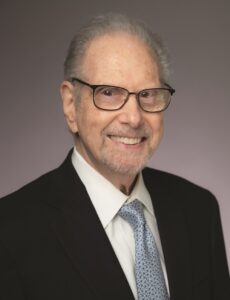
–Marvin Fier, DDS, FASDA, ABAD, is executive vice president of the American Society for Dental Aesthetics, associate clinical professor at Touro College of Dental Medicine, and a dentist in private practice, Pomona, New York. SmileRockland.com

I participate in a group text chat with my wife and daughters. Our daughters are away at college now, but thanks to our group text chat, we’re never completely out of contact. We’re not micromanaging their lives—we’re just remaining in the loop in real time but unobtrusively. They share only what they want to share. There is occasional drama, but overall, it’s wonderfully calming to know what’s going on with the people you care about rather than having to worry what might be going on. –Mark H. Schwartz, MD
I do alternate nostril breathing. This simple yoga breathing technique slows the breathing and focuses the mind. I use a thumb or finger to hold one nostril closed as I breathe in, and then the other as I breathe out for a few minutes or longer at a time. Numerous studies—including a review of 44 earlier studies by a researcher at San Francisco State University—have found that breathing this way is associated with a range of health benefits, including reductions in anxiety and blood pressure and improvements in cognitive performance.

–Cynthia R. Green, PhD, is president of Total Brain Health, a company that develops evidence-based brain wellness classes and programs. One of America’s foremost experts on brain health, she is founding director of the Memory Enhancement Program at Icahn School of Medicine at Mount Sinai in New York City. TotalBrainHealth.com

I practice classical guitar. I took up classical guitar again five years ago after setting the instrument aside for decades. It’s been one of the most intellectually challenging activities imaginable, and the daily ritual of practicing has become a major source of life satisfaction for me. Research has linked learning a musical instrument to a range of health benefits, especially as we age, including reduced stress levels…improved cognitive performance…reduced risk for dementia …increased dexterity…and decreased arthritic pain. –Marc B. Garnick, MD

I write at least one page in a journal every day. Journaling helps me organize my thoughts…reflect on the previous day…consider what the new day might bring…notice if I’m feeling anxious or avoiding anything…and brainstorm solutions to my challenges. I keep a second notebook on hand to list any “to do” items that come to mind. I prefer to journal in the morning before my day begins, not in the evening—I often have clearer insight into the issues and concerns I’m facing after I’ve slept on them.
–Rosanne M. Leipzig, MD, PhD

Protect and Defend
I apply sunscreen to my face whenever I leave the house during the day, even in winter and when it’s cloudy. Most of the sun’s UV rays reach our skin even when it isn’t warm and bright. Daily sunscreen use is the single best thing we can do to avoid skin cancers and premature aging. I prefer mineral sunscreens, which have the active ingredients zinc oxide and titanium dioxide, but chemical sunscreens are effective as well. –Mark H. Schwartz, MD

I floss—the right way. No one will be surprised that a dentist flosses every day, and most people also know that dental care is tremendously important to our health, not just our teeth. As former Surgeon General Dr. David Satcher said, “The mouth is a mirror of the body, it is a sentinel of disease and it is critical to overall health and well-being.” But even people who do floss every day often don’t do it correctly. They tend to snap the floss straight up or down into a gap between teeth, then quickly move on to the next gap. That might dislodge particles caught between the teeth, but it doesn’t remove plaque from tooth surfaces. Instead, I use a back-and-forth sawing motion to work the floss between teeth, then I bend the floss into a U shape around the tooth to one side and rub it up and down…then do the same around the tooth on the other side before moving on to the next gap. –Marvin Fier, DDS, FASDA, ABAD



